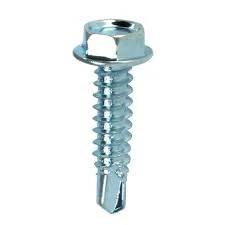Understanding the Issues with Loose Anchor Bolts in Construction and Maintenance
Understanding Loose Anchor Bolts Causes, Effects, and Solutions
Anchor bolts are critical elements in construction and engineering, designed to attach structural elements to concrete foundations. These bolts play an essential role in ensuring the stability and safety of various structures, from buildings and bridges to wind turbines and towers. However, loose anchor bolts can pose significant risks, leading to structural failures and safety hazards. This article delves into the causes, effects, and prevention of loose anchor bolts, providing insights for engineers, construction professionals, and DIY enthusiasts.
Causes of Loose Anchor Bolts
Several factors can lead to anchor bolts becoming loose over time. Understanding these causes is crucial for preventing future issues and ensuring structural integrity.
1. Temperature Fluctuations Concrete and metal expand and contract with temperature changes. This differential movement can cause anchor bolts to loosen. In regions with extreme temperature variations, the risk of loose bolts increases significantly.
2. Vibration Construction sites and operational facilities often experience vibrations from machinery, traffic, or environmental factors such as earthquakes. These vibrations can gradually cause bolts to unscrew, leading to loosening over time.
3. Poor Installation Techniques Incorrect installation is one of the most common causes of loose anchor bolts. If anchor bolts are not adequately tightened or if the installation process is flawed, they are more susceptible to loosening.
4. Settlement of the Foundation Over time, concrete foundations can settle, especially if they are built on unstable ground. This settlement can create pressure points around the anchor bolts, causing them to loosen.
5. Corrosion Environmental exposure can lead to the corrosion of metal components, including anchor bolts. As the metal deteriorates, it can lose its grip on surrounding materials, resulting in looseness.
Effects of Loose Anchor Bolts
The consequences of loose anchor bolts can be severe, impacting both the safety of a structure and the wellbeing of its occupants.
1. Structural Instability The most significant risk associated with loose anchor bolts is structural instability. Buildings, bridges, and other infrastructures rely on the strength of anchor bolts to stay secure. Loose bolts can lead to failure, catastrophic collapses, and devastating consequences.
loose anchor bolt

2. Increased Maintenance Costs Structures with loose anchor bolts require ongoing inspections and repairs. The costs associated with troubleshooting and fixing loose bolts can accumulate over time, impacting project budgets significantly.
3. Safety Hazards Loose anchor bolts can pose serious safety risks for workers and occupants. The potential for sudden structural failures can lead to injuries or fatalities, making it essential to address any signs of loose bolts immediately.
Solutions and Prevention
Preventing loose anchor bolts is crucial for maintaining structural integrity and safety. Here are some effective strategies
1. Regular Inspections Routine checks of anchor bolts can help identify looseness before it becomes a significant problem. Inspections should be conducted on a regular basis, especially for structures subjected to vibrations or extreme temperatures.
2. Proper Installation Ensuring that anchor bolts are installed correctly is the foundation of preventing looseness. Following manufacturer specifications and guidelines, including the use of proper torque settings, is essential.
3. Use of Locking Mechanisms Incorporating locking washers, tensioning devices, or adhesive compounds can help secure anchor bolts in place. These mechanisms can provide additional resistance to loosening caused by vibration or thermal expansion.
4. Address Environmental Factors Understanding the environmental factors that impact anchor performance is crucial. Implementing measures to mitigate the effects of temperature fluctuations, vibration, and corrosion can enhance the longevity of anchor bolts.
5. Foundation Assessment Conducting a thorough assessment of the foundation before installation can help identify potential settlement issues. Choosing a stable location, reinforcing the foundation, or using specialized anchoring techniques can prevent future problems.
Conclusion
Loose anchor bolts represent a critical concern in construction and engineering, with the potential to compromise structural integrity and safety. By understanding the causes, recognizing the effects, and implementing preventive measures, professionals can ensure that anchor bolts remain secure, ultimately safeguarding the stability of various structures. Regular inspections, proper installation techniques, and the use of innovative technologies can significantly reduce the risk of loose bolts, contributing to safer buildings and infrastructures for all.
-
Weatherproof Plastic Expansion Anchors for OutdoorNewsJun.06,2025
-
Sustainability in the Supply Chain: Eco-Friendly TEK Screws ProductionNewsJun.06,2025
-
Load-Bearing Capacity of External Insulation FixingsNewsJun.06,2025
-
Double Head Bolts: Enhancing Efficiency in Industrial MachineryNewsJun.06,2025
-
Corrosion Resistance in Chipboard Screws: Coatings for Wholesale DurabilityNewsJun.06,2025
-
Butterfly Toggle Bolts : Enhancing Structural ResilienceNewsJun.06,2025
